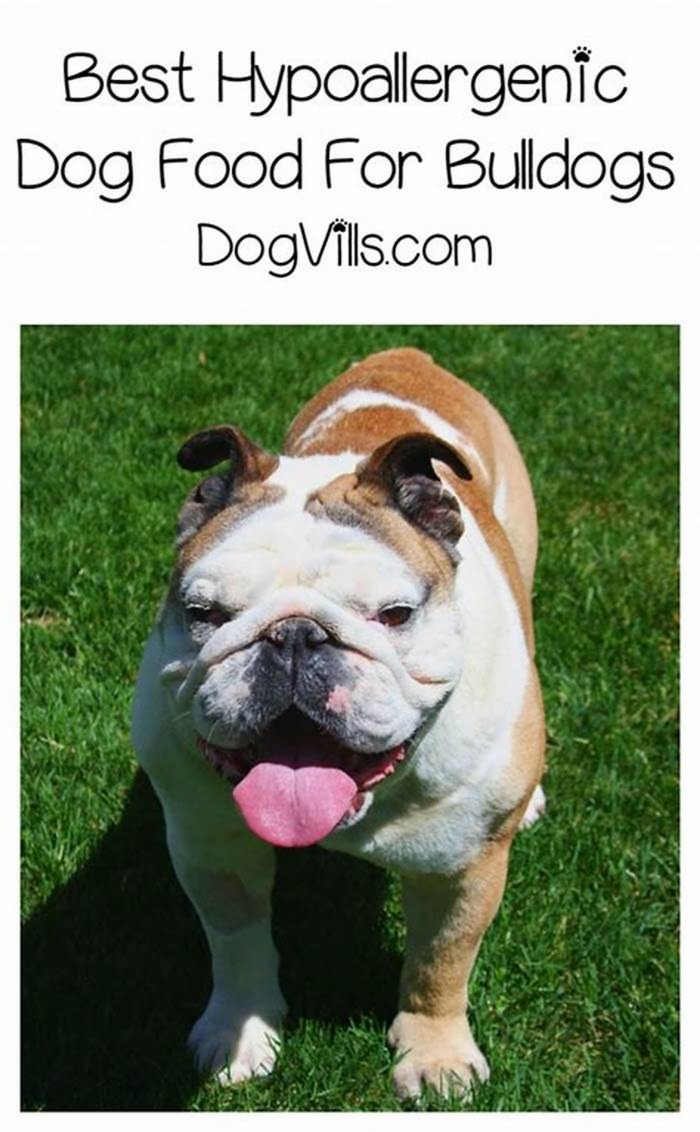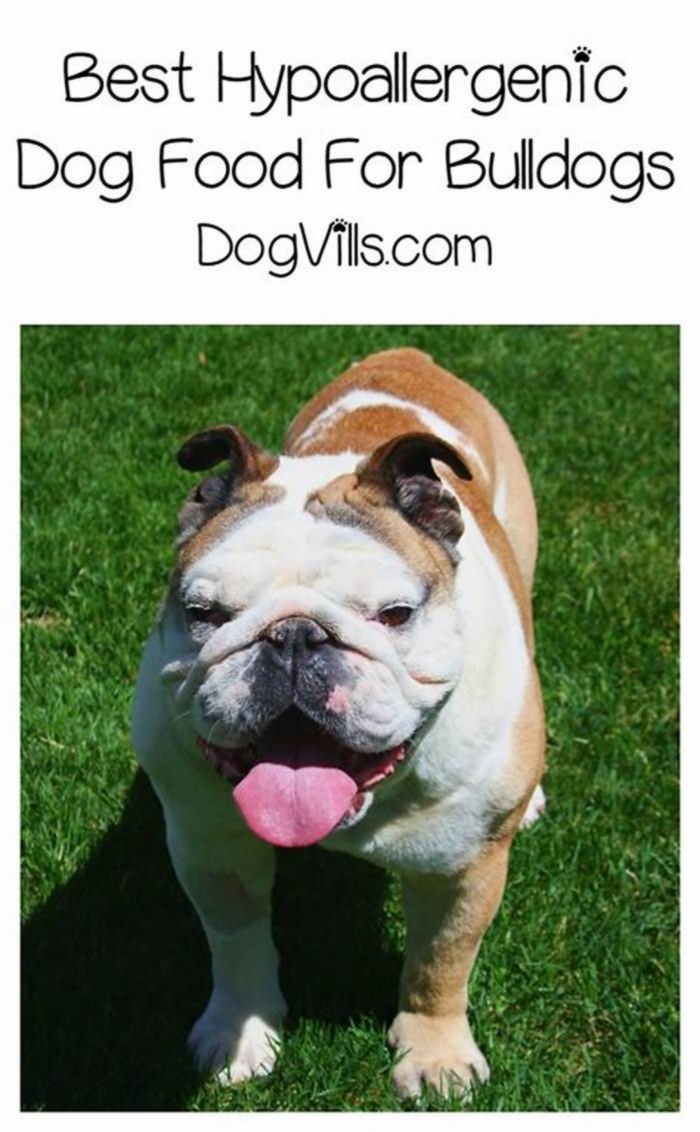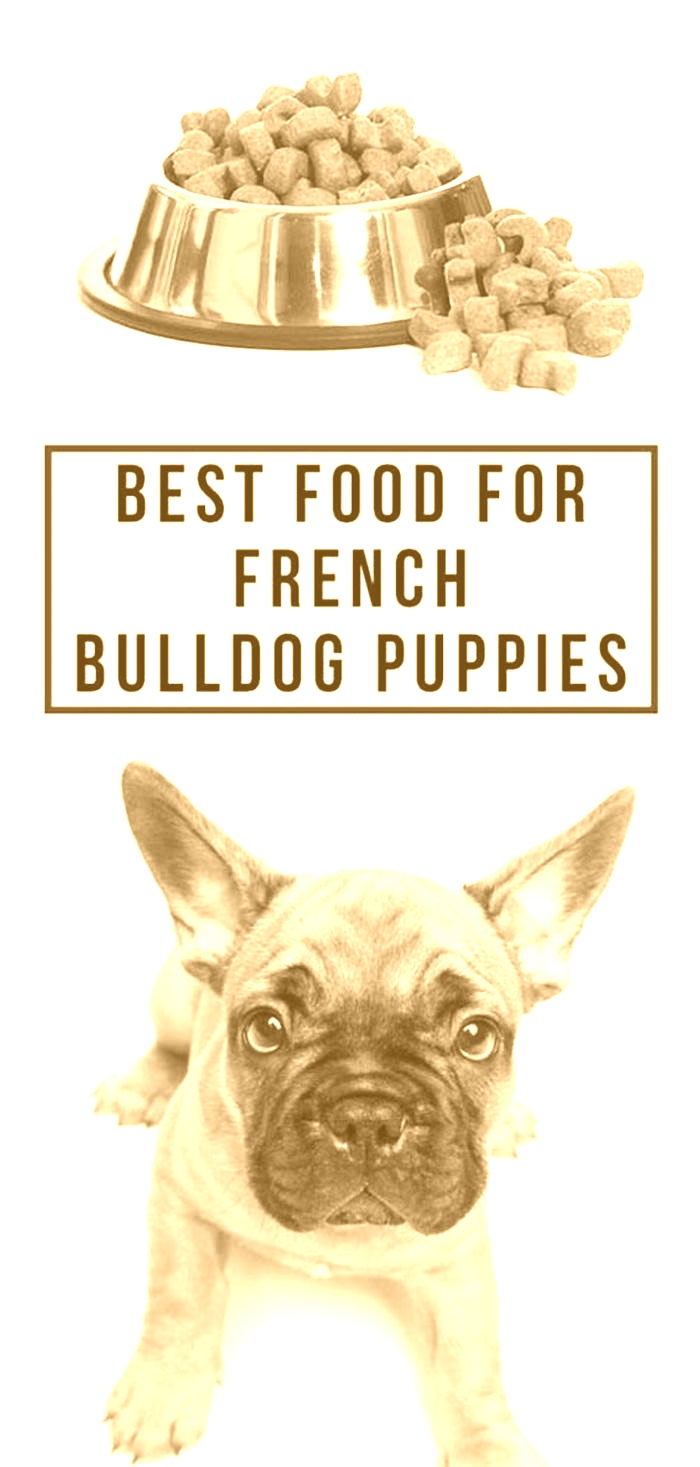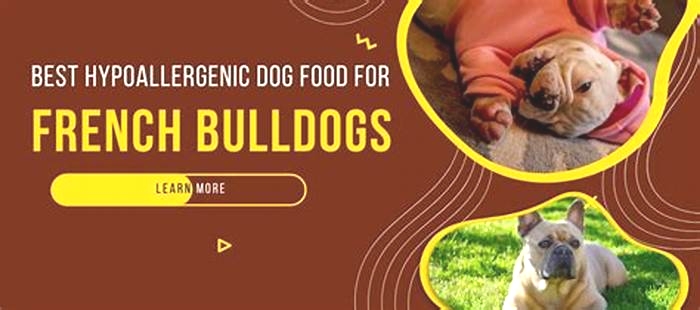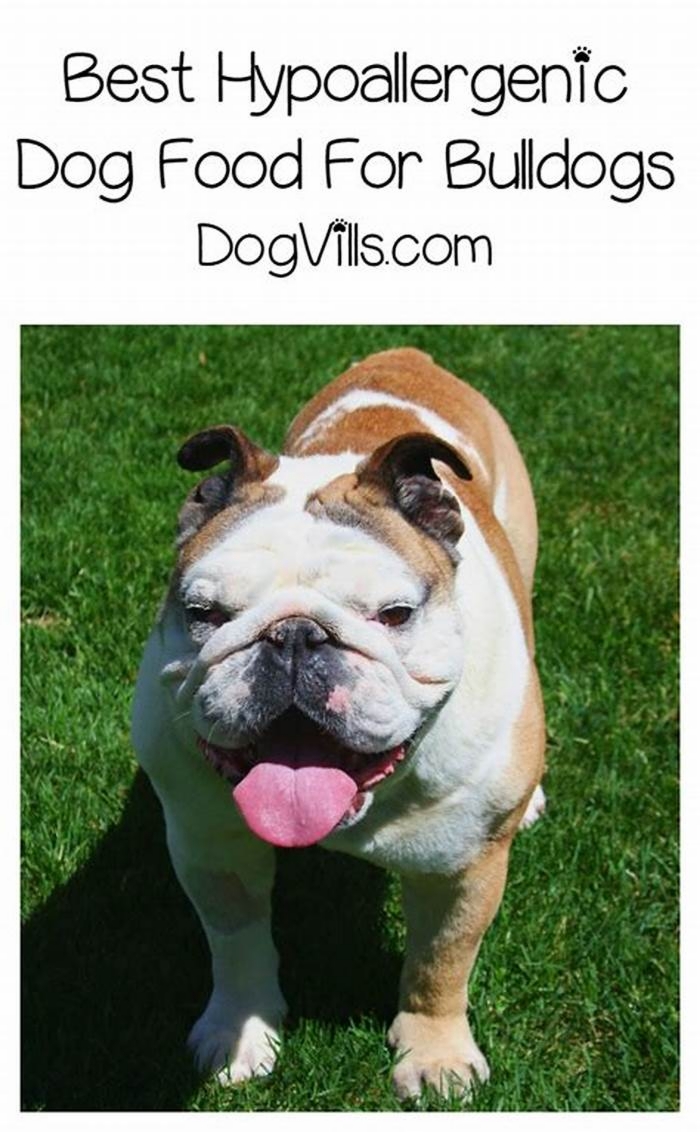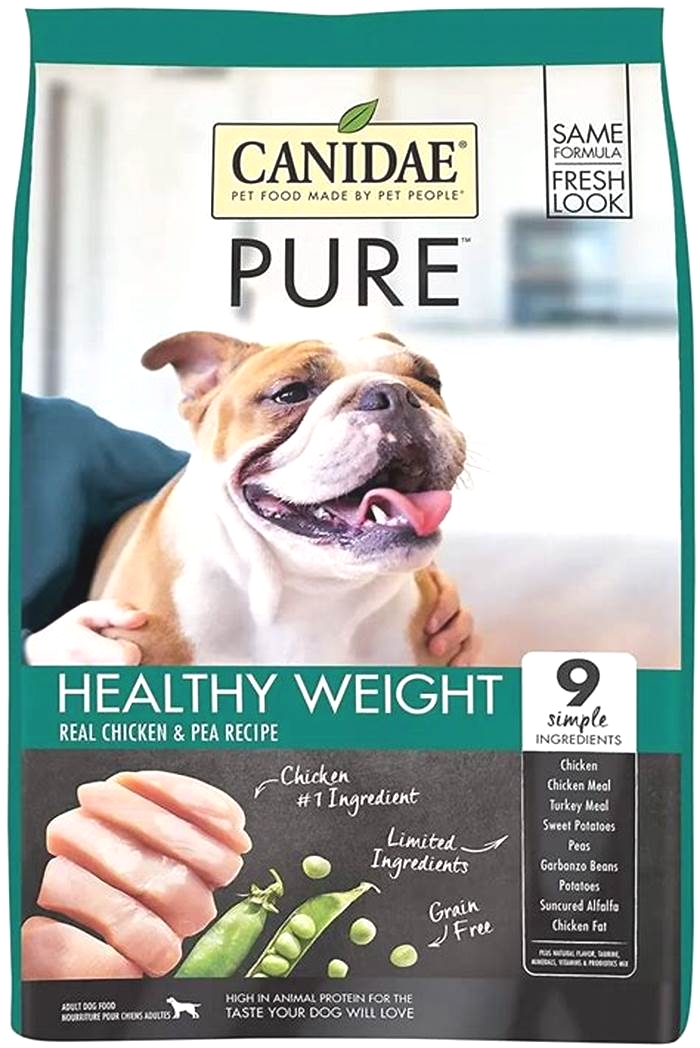best hypoallergenic dog food for bulldogs
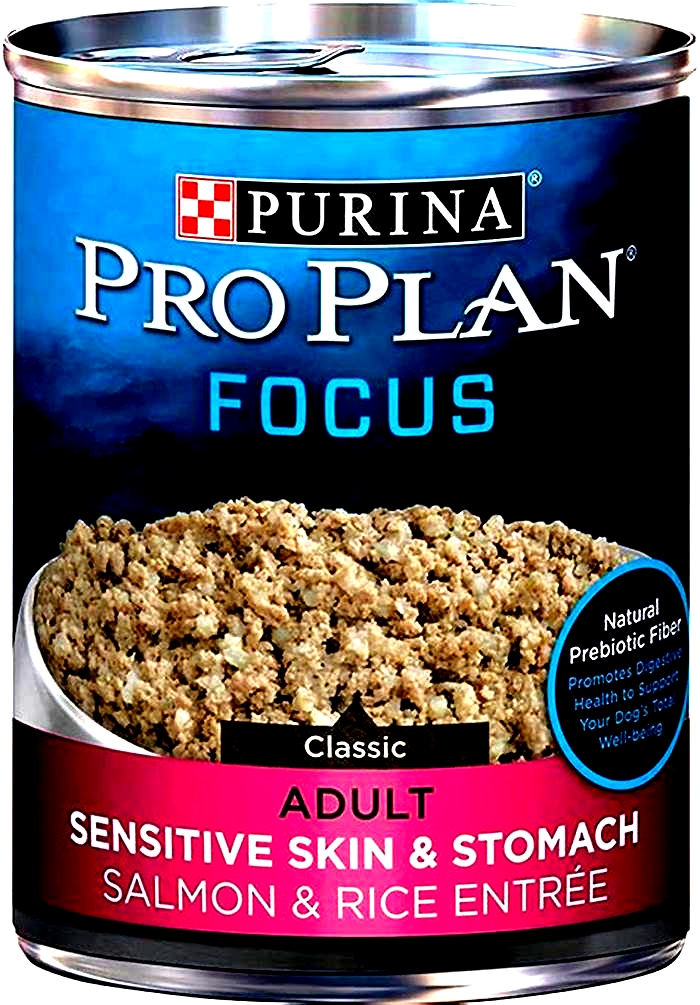
Best Hypoallergenic Dog Food For Bulldogs
One of our readers recently asked: What is the best hypoallergenic dog food for bulldogs?Hypoallergenic food is a topic Ive been covering at length lately. As you know, I generally promote the ideas of ingredients over pre-packaged breed specific branding. Today is no different. Well be looking at the best ingredients in hypoallergenic dog food if youre feeding a Bulldog. This is a breed with very specific issues that food can absolutely help address.
English Bulldog Issues
First and foremost, the Bulldog is a breed that has been over-bred to the point that its healthy issues are many and severe. In fact, this breed has been so inbred that recent studies have shown that there is little to no wiggle room in the breed to attempt to breed out all the problems it has. This means that if you have a Bulldog, youre going to need every available weapon you can add to your Bulldog health arsenal.
Bulldog Issues Include:
- Fold Dermatitis A condition in which the folds of the Bulldogs skin become irritated and purulent
- Many Other Skin Problems Severe allergies, eczema, dry skin, acne
- Elbow and Hip Dysplasia Condition in which the bones dont seat correctly in the sockets
- Arthritis
- Degenerative Spine Disease
- Joint and Ligament Issues
- Heart Disease
- Highest Cancer Rate of any Breed
These are just SOME of the health issues associated with English Bulldogs. I only included these because they are the ones which can be partially addressed with food. The right ingredients in hypoallergenic dog food can help support the health of English Bulldogs in all of these areas.
What is the Best Hypoallergenic Dog Food For Bulldogs?
The short answer? The best hypoallergenic dog food for bulldogs is one that is low in calories and high in omega fatty acids, glucosamine, and antioxidants. Lets take a closer look at why those ingredients are so important.
As I said, the English Bulldog has a metric ton of health issues, and while you cant remedy them, you can help to promote better health and a lesser instance of these things happen with your dog if you get food with the right ingredients. The right ingredients in your Bulldogs hypoallergenic dog food can be an essential part of keeping him as healthy as possible.
Reduced Calorie
As with all dogs, the very first thing in a hypoallergenic dog food for your Bulldog is reduced calorie. Its important for any breed to stay at a healthy weight, but with the English Bulldogs propensity for joint and tendon issues along with the highest instance of cancer of any breed, its exponentially more important to keep them at their ideal weight.
Omega Fatty Acids
Omega fatty acids are an English Bulldogs best friend. Look for a hypoallergenic dog food with fish as the main protein source or with added sources of omega fatty acids. Theyre so important because they make antioxidants, powerful cancer-fighting agents, more effective. Fatty acids support joints. They also support skin health, which is so important for combating fold dermatitis, as well as reducing whole body inflammation and promoting heart health.
Glucosamine
Although many people say its a myth, I swear by glucosamine supplements. I have seen many a dog show vast improvement after using these supplements. When looking for hypoallergenic dog food for an English Bulldog, look for a food with glucosamine added. Some foods have it, and it can help with the joint problems that English Bulldogs are so prone to.
Antioxidants
Look for a hypoallergenic dog food with an antioxidant matrix, which is just a fancy term for added antioxidant ingredients. Antioxidants have long been known to combat free radicals which are major contributors to cancer. Antioxidants also support whole body health because they help destroy dangerous free radicals throughout the body.
Great Ingredients Support Great Health
The English Bulldog is a biological train wreck. That is a direct quote from the vet I used to work with, and shes right. Years of over breeding, inbreeding, and breeding for traits that people found attractive but were ultimately extremely unhealthy have led to an animal with a host of MAJOR health issues. If you have an English Bulldog, any and everything you can do to support better health is incredibly important.
So whether youre looking for hypoallergenic dog food or just food in general, always look for the ingredients above. These ingredients can help support every part of your English Bulldog and his potential health risks.
Do you have an opinion on the best hypoallergenic dog food for bulldogs? Share your recommendations in the comments!
-
A former Veterinary Assistant at Southwest Animal Care Hospital, Ben is an animal lover, blogger, and all-around geek. Along with writing for DogVills, Ben runs his own virtual assistant company, BizzyBim.
View all posts
Best wet dog food for french bulldogs
Best wet dog food for french bulldogs

The particular best for the dog according to this slogan, many dog owners lovingly care for their pets. The four-legged friends need attention and occupation, but above all, of course, food. The meals is crucial to ensure that the dog is supplied with all the important nutrients and remains in health to live a long dogs life. But it is often not so no problem finding the right food for your own dog. Similar to humans, it is also important to consider a balanced diet. In addition, the wide range of offers in the trade can cause confusion. Different questions arise: What nutritional requirements does the dog have in addition to what quantity? Which food is suitable where age? Is definitely dry or wet food the right choice for your four-legged friend? And just how much should the dog be given? What can cause deficiency symptoms?
Inside the following best wet dog food for french bulldogs, we present 10 products. We provide information about which ingredients the foods contain and for which dogs the products are suitable. In our guide, we describe the types of dog food, go into some of the ingredients and explain how much food a dog needs. In addition, you will learn which foods dogs cannot put up with and just how you can recognise a food allergy.
Below is a list of the best wet dog food for french bulldogs:
Last Amazon price update was: April 8, 2024 4:23 pm
After hours researching and comparing all models on the market, Life my Dog finds out the Best wet dog food for french bulldogs of 2024. We would recommend using ROYAL CANIN French Bulldog Food 3kg as it is one of the best products currently available in market.
23.48
6 new from 23.48
as of April 8, 2024 4:23 pm
Top 10 Best wet dog food for french bulldogs
Best wet dog food for french bulldogs
ROYAL CANIN French Bulldog Food 3kg
23.48
6 new from 23.48
as of April 8, 2024 4:23 pm
Features
- Royal Canin
- French Bulldog
- Complete Food for Adult Dogs
Royal Canin for Small Breed Wet Dog Food Mini Adult 12*85g 1 - 10kg Adult Dogs Hypoallergenic Dog Food 10 Months - 12 Years Old Protects Skin And Coat Enhanced Palatability
14.97
11 new from 11.08
as of April 8, 2024 4:23 pm
Features
- WET FOOD FOR SMALL DOGS ROYAL CANIN Mini Adult in Gravy is for dogs between the ages of 10 months and 12 years weighing up to 10 kg
- SPECIAL FORMULA The formula of ROYAL CANIN Mini Adult in Gravy can help support your dogs health with special nutrients.
- ADJUSTED ENERGY CONTENT The carefully adjusted energy content of ROYAL CANIN Mini Adult in Gravy can help maintain the ideal weight of small dogs.
- OMEGA3 FATTY ACIDS ROYAL CANIN Mini Adult in Gravy contains nutrients like the omega3 fatty acids EPA and DHA which can help support your adult dogs skin and coat health
- COMPOSITION Meat and animal byproducts grains oils and fats vegetable byproducts minerals sugars.
MjAMjAM Natural Wet Dog Food, Mix Pack 1 with Chicken and Duck, Beef, Turkey, 6 x 200g
11.5210.68
as of April 8, 2024 4:23 pm
Features
- Complete wet dog food - extra high proportion of meat - essential vitamins and minerals - grain free
- For our meals, we mainly use ingredients that come from regional farms
- MjAMjAM - because it`s tasty
- Free from: Gluten, sugar, synthetic preservatives, lactose
Royal Canin French Bulldog Puppy Breed Specific Dry Dog Food, 3 lb. bag
28.48
5 new from 28.48
as of April 8, 2024 4:23 pm
Features
- Royal Canin French Bulldog Puppy dry dog food is designed to meet the nutritional needs of purebred French Bulldogs 8 weeks to 12 months old
- Exclusive tailor-made kibble helps a French Bulldog easily pick up and chew their food
- Helps protect a puppys developing immune system and natural defenses with an exclusive complex of antioxidants including vitamin E
- Reinforces the skin barrier with essential nutrients to support healthy skin and wrinkles
- Helps reduce gas and stool odor with highly digestible proteins and precise fiber content
Harringtons Grain Free Wet Dog Food Mixed Flavours 16x400g
27.8517.09
Free shipping
as of April 8, 2024 4:23 pm
Features
- 1. THE NATURAL CHOICE - At Harringtons, we believe every dog deserves natural food that's balanced, wholesome and tasty. From puppies to seniors to special diets, we make a range that's perfect for you.
- 2. GRAIN FREE - Harringtons wet dog food is a complete grain-free dog food providing balanced nutrition for all dogs age 8 weeks and above.
- 3. DELICIOUS FLAVOURS The Mixed 16x400g wet dog food multi-pack contains 4 tasty flavours for your dog to enjoy 4x Turkey, 4x Salmon, 4x Chicken & 4x Duck.
- 4. UNIQUE FRESHCOOK METHOD - Our meat's so good, it's graded for humans. We freshly prepare it, cook it gently to lock in nutrition and flavour, then add vitamins and minerals.
- 5. MADE IN THE UK Harringtons dog food is proudly made by ourselves right here in the UK and has been family run since 1923.
Royal Canin Mini Puppy Wet Dog Food in Gravy Pack 12 x 85g. and Healthy Teething Treats and Donut Plush Squeaky Puppy Toy
22.9721.96
4 new from 21.96
as of April 8, 2024 4:23 pm
Features
- Royal Canin Mini Puppy Wet Dog Food in Gravy Pack 12 x 85g. and Healthy Teething Treats
- Intense Energy Content: Meets the energy needs of small breed puppies
- Digestive Health: Combination of nutrients with high quality protein and prebiotics to support digestive health and the balance of intestinal flora
- Immune System Support: Helps support your puppys natural defences thanks to a patented complex of antioxidants
- Contains chamomile extract, menthol extract & clove oil to help reduce the discomfort of teething and to help soothe gums. Puppy teething treats are fortified with vitamin C.
Royal Canin French Bulldog Junior 3kg
29.98
as of April 8, 2024 4:23 pm
Features
- Royal Canin
- French Bulldog Puppy Food
ROYAL CANIN Mini Puppy Wet Dog Food in Gravy Pack 12 x 85g. and Healthy Calming Treats for Puppy and Donut Plush Squeaky Puppy Toy
26.99
6 new from 25.99Free shipping
as of April 8, 2024 4:23 pm
Features
- Royal Canin Mini Puppy Wet Dog Food In Gravy Pack 12 X 85G And Healthy Calming Treats For Puppy And Donut Plush Squeaky Puppy Toy
- Brand: Royal Canin Veterinary
- Product Type :Pet Food
Edgard & Cooper Natural Wet Dog Food - Grain Free, High in Protein & Healthy (Multipack, 100g (Pack of 6))
10.75
5 new from 10.75
as of April 8, 2024 4:23 pm
Features
- Pet Things - Fur, Hair, Fins & Feathers!
ROYAL CANIN French Bulldog Adult Dog Food, 9 kg
58.2655.64
13 new from 55.64
as of April 8, 2024 4:23 pm
Only the best for the dog relating to this saying, many dog owners lovingly care for their pets. The four-legged friends need attention and job, but most importantly, of course, food. The food is crucial to ensure that the dog is supplied with all the important nutrients and remains in health to live a long dogs life. But it is often not so easy to find the right food for your own dog. Similar to humans, it is also important to consider a balanced diet. In addition, the wide variety of offers in the trade can cause confusion. Various questions arise: What nutritional requirements does the dog have and what quantity? Which in turn food is appropriate at which age? Is usually dry or wet food the right choice for your four-legged friend? And just how much should the dog be given? What may cause deficiency symptoms?
In the following dog food comparison, we present 14 products. We offer information about which ingredients the foods contain and for which pups the products are suitable. In our guide, we describe the types of dog food, go into some of the ingredients and explain how much food your dog needs. In addition, you will understand which foods dogs cannot endure and how you can recognise a food allergy.
The different types of dog food quickly
Just as every person has their own nutritional needs, every dogs preferences are different. The choice of food that moves into the dogs bowl should be produced according to various factors. These include the breed, activity and health of the dog. Grow older also plays a role.
Puppies are growing and need special nutrients. In addition, their digestive system is not yet as efficient. An adult dog needs carbohydrates, fats, oils, protein and minerals. His dog food should be balanced. More mature dogs have a slow metabolism and are no longer as active. Consequently, they need less energy, i. e. calories from fat. Yet , the dog food should be easy to process and include a whole lot of proteins. In addition, the types of food vary in words of composition, technique of creation and consistency.
Composition complete or complementary food?
A complete feed includes all the nutrition the dog needs on a regular basis. The portion of proteins, fatty acids, minerals and vitamins differs according to the product. The ingredients should be adapted to the age, activity and possible allergies of the four-legged friend. A whole food can be dry or cast food. Supplementary meals are not sufficient per to provide the dog with all the essential nutrients. These can be flakes that the dog owner blends into the food or treats. The declaration shows what it is.
14.97
11 new from 11.08
as of April 8, 2024 4:23 pm
Type of production
Dry food and wet food available in family pet shops and food markets usually comes from professional production. This kind of is the most common form of dog food. Industrially produced wet food is often filled in cans or small aluminium trays. With all the latter, one bowl is sufficient for one portion. Nevertheless, some manufacturers of business dog food use genetically revised raw materials and additives.
Industrially produced dog food has a long shelf life. By exclusions, this dog food can be stored unopened for many years with no loss of quality.
Natural dog food only uses raw materials that come from herb, animal or other natural sources unaltered or prepared. The food must not contain any chemically synthesised additives. Nevertheless , certain synthetic nutritional supplements are permitted. In conditions of packaging, there is often almost no difference compared to industrial food: natural dog food is packaged in cans or as dried out food.
Organic and natural dog food must comply with stricter guidelines regarding substances. For example, the product must not contain numerous substances such as genetically revised ingredients, hormones and pesticides. There are differences between the various organic and natural dog foods: 100 per dollar organic means that no undesirable substances have been prepared. With the claim organic, the constituents in the natural food are 95 per penny organic. If it states made with organic, the product includes 70 per penny organic and natural ingredients. Organic and natural food is available as dry and wet food.
10.68
11.52
as of April 8, 2024 4:23 pm
Meanwhile, vegan and vegetarian dog food is available too on the market. This kind of dog food does not contain meat but still provides the dog with the important nutrients. Nevertheless , vegan and vegan dog food contains a lot of fresh vegetables and grains, which can cause problems if the dog is intolerant.
An exclusive form of dog food is BARF. The abbreviation stands for biologically species-appropriate organic feeding. This species-appropriate method of feeding raw food is based on the dogs ancestor the wolf. When barfing, the dog is fed uncooked fresh meat, often along with raw, pureed fruit or fresh vegetables. Whether this method is actually more healthy is debatable. Considering that the meals are merged individually, barfing is more ideal for experienced pet owners who have studied this diet of their four-legged friends in detail.
There are manufacturers who advertise that their dog food is of food quality. This kind of is a statement that ought to be treated with caution. There is no such thing as food-grade pet food. This also applies to dog food. You should also watch out for attractants and flavour enhancers in dog food. These are supposed to give the food the smell and taste. Some dog enthusiasts also avoid dog or cat food/dog food from factory farming.
Difference between extruded and cold-pressed dried fodder
Dried dog food is produced by the cold-pressing or extrusion process:
1. Cold-pressed dog food is created by first drying the uncooked materials and then grinding and combining them. A tool presses this mass through the spaces of a carol wall. Shaped and compacted chunks of feed come out the other part. Throughout the dog food production process, temps of around 90 degrees Celsius are produced, which obviously contradicts the word cold pressing. However , temperatures are still significantly lower than those utilized in extrusion.
2. In the extrusion process, the ingredients for your dog food are exposed to high temperatures. Many nutrients are lost during this manufacturing process. These types of must be artificially added to the food after processing. During processing, the dough-like extruded feed is conveyed through nozzles at high pressure. Feed produced in this way swells considerably when liquid is added.
28.48
5 new from 28.48
as of April 8, 2024 4:23 pm
Both methods have advantages and disadvantages: Because the nutrients have not yet been damaged down, a dog can digest the cold-pressed food naturally, slowly and gradually. In addition, the food consists of more natural substances. If the four-legged good friend has problems with the gastrointestinal tract and an annoyed digestion, extruded dog food can be more tolerable for him. In this dog food, the starch has already been broken down during heating. On the other hand, the manufacturing process is only a supplementary factor in identifying the tolerability and quality of the food. The most important thing is the quality of the unprocessed trash.
Which is better damp food or dry out food?
There is wet and dry dog food on the market. The two types of dog food differ in their water content.
Dry food consists of very little water and therefore has a longer shelf life . usually several years. Dogs that are fed dry food have to chew more and so coach their teeth. Eating dry food is almost like brushing your dogs teeth. To get dogs that drink little, feeding dry out food can be a disadvantage. They can become dehydrated if they are fed only dry food. Therefore, it is important to provide the dog with enough water. The benefits and disadvantages of dry food at a glance:
Pros
- Long shelf life
- More affordable than wet food
- Easier to feed on the go
- Easy to store
- Almost germ-free due to heating during production
- Even more green than processed food
Cons
17.09
27.85
10 new from 17.09
as of April 8, 2024 4:23 pm
- Generally less acceptable to your dog
- The dogs body is deprived of water, so it has to drink more.
- Can lead to overweight quicker if it is not a diet food
- Risk of mould or temperato formation if stored incorrectly
Wet dog food has a high water content. The wet food is usually portioned in tins or small bowls. Generally one package of wet food corresponds to one meal. Many dogs like damp food much better than dry food. In contrast to dry food, moist food for puppies once opened up can only be kept for a few times. It should be used up within 2 times of opening. Below we have summarised the huge benefits and disadvantages of wet food:
Pros
- High popularity by most four-legged friends
- Packed in convenient portions
- Since of the high water content in wet food, your canine does not need so much additional liquid.
- If necessary, medication can be administered with the wet food.
Cons
- After opening, damp food cannot be stored well
- Good sized dogs need more space for storage
- Even more difficult to hold and feed on the move
- Wet food smells more intense
- Costs more than dry food
- Produces more waste
This is not possible to make a general statement about which type of dog food is ideal for your dog. Your dog finally makes a decision which dog food it likes and which variety it prefers. To find out which type of dog food your pet likes better and which he tolerates better, you should try out both types.
Several dog owners change between wet and dry food. The following pertains to both types of food: It should just be given as a primary meal, never as a treat in between meals. This can lead to overfeeding of your dog.
21.96
22.97
4 new from 21.96
as of April 8, 2024 4:23 pm
How much meat and just how many carbs and nutrients fit in in dog food?
The standard of the dog food plays a major role in a balanced and proper diet. It is important that the dog food consists of healthy ingredients and nutrients irrespective of whether it is wet food or dry food. The proper composition of your dog food is also crucial for good digestion and the health of the four-legged good friend.
How much meat should the food contain?
Dogs are originated from wolves that is why their digestive area is similar to that of predators. Therefore to start with, the supply of meat is important. Nevertheless , this is not the only thing that matters. Unlike the wolf, the dog was domesticated by humans, and its needs and genetics have changed. This also applies to digestive function. For example, the dogs digestive chemical can now break down starch, meaning that the four-legged friend can also digest flower food in smaller quantities.
To start with, various meats provides the dog with protein. The four-legged friend needs protein for its muscles, bones, strong tissues, healthy tooth and nerves and also to provide energy for its activities. As a result, senior dogs have a lower necessary protein requirement because they are no longer as active as young or adult animals. In general, experts declare dog food should contain between 50 and 70 % meat. But other ingredients are important too. If dog owners feed only various meats with their four-legged friends, this can lead to digestive problems, stress on the kidneys and liver due to excess protein and deficiency symptoms.
Vitamins, minerals and carbs in dog food?
A balanced dog diet also includes nutrients that are not found in meat for example , vitamins and mineral deposits found in vegetables and fruit, or fatty stomach acids from healthy natural oils. The four-legged friend also needs carbohydrates. Wolves, for example, eat the stomach and intestinal contents of prey pets or animals, now and then also berries and grass.
Dogs convert starch from grain, potatoes and cereals into energy and require it for their intestinal flora. On the other hand, the need for carbohydrates is low. Fillers from grow waste such as press residues from oil production, stalks, husks or straw in many cases are added to the feed. High-quality carbohydrates are normally found in rice, potatoes, millet, maize, amaranth or buckwheat.
29.98
as of April 8, 2024 4:23 pm
Animal fat provide the dog with twice as much energy as proteins. To prevent overweight, the meals should contain these chemicals only in moderation. How much should be in the dog food will depend on how much the animal moves. Lamb and poultry fats are saturated oily acids. They are stored in the body as emergency portion and are designed as a hold for bad times. Meat and veg oil contain condensed omega-6 fatty acids and unsaturated fatty acids. Omega-3 natural oils, which are seen in fish, are extremely valuable for cellular metabolism.
What should maintain the dog food? Dog food should include 50 to 70 percent lean meat or muscle meat or fish with top quality proteins. In addition, there ought to be about 20 to 50 percent high-quality carbohydrates for energy production and fruit, vegetables or herbs for the necessary vitamins and minerals. The proportion of offal should be a more 10 percent. Offal provides valuable nutrients such as vitamin h or iron. Great quality oils such as salmon oil or linseed fat improve nutrient consumption and ensure a functioning cardiovascular system, a shiny coat and healthy skin.
How do i recognise high-quality dog food?
Doggie food sold in UK must be labelled with certain mandatory information. These types of include:
Treat and name of the manufacturer Date of manufacture or best-before day of the dog food Brand of the food Net weight Moisture content for canned food
With regard to the ingredients of the feed, various statements are permitted: A closed declaration only indicates ingredient types. These are, for example , statements such as with cereals and vegetable by-products. A semi-open declaration lists the individual raw materials, but not their percentage. The open declaration provides the composition in % and the respective sources of raw materials. When reading the food label, dog owners should also note the following:
1. Many manufacturers split the definition of grain into individual organizations. The reason for this is that the large total quantity appears smaller. For example, maize becomes maize starch, maize feed meals, maize flour, maize gluten or source. The cereal components provide carbohydrates and saturate well, but really should not be included in too large amounts.
2. The ingredients in the supply are listed in descending order according to their quantity. The further forwards an ingredient is listed on the label, the better its proportion. Alternatively, this implies: Only a tiny proportion of an ingredient that is listed far over the list is included in the feed.
Other aspects by which dog owners recognise the quality of the food are:
Meat content of 50 to 70 per cent Grain and veg content between 25 and 50 percent Balanced substances with all the necessary vitamins and minerals No use of taste enhancers
These nutrients make a good dog food
The dogs organism does not have any trouble digesting good dog food. Signs of this are almost odourless faeces, high vitality and a shiny coat. The proportion of nutrients in a dog food is detailed under the definition of analytical ingredients. We certainly have summarised these in the table:
| Component | Quantity required | Tasks | Information and special features |
| Crude protein | 20 to 25 percent in dry food 8 to 10 percent in wet food | Builds the bodys own tissue such as muscles and bones Strengthening skin and organs Enzymes, blood and hormones also need protein | High-quality protein comes mainly from muscle meat. Low-quality protein is found in slaughterhouse waste |
| Crude ash | 5 to 8 per cent or a maximum of 10 per cent for dry food. Less than 2 percent for wet feed | Supply of inorganic substances such as magnesium, calcium, zinc or silicic acid | Formed after combustion of the feed Proportion should be balanced Sometimes cheap but unnecessary bone meal products are added |
| Crude fibre | 2 to 3 percent for dry food 0.2 to 5 percent for wet food | Support of digestion Stimulation of intestinal activity Strengthens healthy intestinal flora Influences consistency and shape of dog faeces | Proportion of dietary fibre Too high a proportion can lead to flatulence and large quantities of faeces Rumen is filled with raw fibre Otherwise in the form of vegetables and fruit |
| Crude fat | At least 15 percent in dry food for active dogs 12 to 15 percent for dry food for dogs with normal to less exercise 1 percent for wet food | Provides energy Ensure healthy skin and shiny coat | High-quality products include salmon oil, linseed oil, cod oil, pumpkin seed oil and hemp oil. |
The other possible ingredients in dog food are explained below:
1. The value for meat and animal by-products indicates the meat content in the dog food. Companies often do not declare precisely what is involved. It may be high-quality muscle meat or offal as well as low-quality offal. The latter includes, among other things, jerky, rumen or chaps. Animal by-products include, for example , hair, bone fragments, hooves, blood or beaks.
2. Fish as well as its by-products include fish fillets, our bones and fish minds.
3. Plant by-products include, for example, vegetables, cereals and pulses and essential oil fruits. They can be partially health- and digestion-promoting food components.
4. Technological additives are preservatives, separating and binding agents, stabilisers, thickening and gelling agents and acid regulators. A few of these are important. These include, for instance , emulsifiers and natural antioxidants. Emulsifiers ensure an uniform uniformity of oil and water. Natural anti-oxidants are to prevent rancid fat.
5. Nutritional additives are intended to support the health of the four-legged good friend. They should be included in the right formula, for example as vitamins, provitamins, amino acids and track elements.
6. Zootechnical additives can be added to the feed to impact the dogs performance and health such as stabilisers for the digestive tract flora or digestive : enzymes.
7. Sensory additives are utilized to influence the appearance and taste of your dog food. They include flavourings and colourings.
Overweight canines suffer! Obesity is an expanding problem in dogs with serious health consequences. That can lead to diseases of bodily organs, puts stress on bones, joints and the cardiovascular system, and promotes inflammation. It can also shorten the life expectancy of the animal. Often , too much food is the reason for overweight. But age, sex and breed also may play a role. Especially Cocker Spaniels, Labrador Retrievers and King Charles often become overweight. Sometimes the use of diet food should be considered.
How much food does my dog need?
In the event the four-legged friend gets more energy than he uses, he can become overweight. Therefore, it is very important to give puppies the necessary food. Just how much pet food a dog needs depends upon various factors. In addition to the breed, the subsequent aspects are relevant, for example:
Activity level: How much the four-legged good friend moves determines the amount of energy it burns. A dog that moves a lot burns more calories. If the dog is not so active, it burns fewer calories and has a slower metabolism. Consequently, he needs less food.
Age: Young dogs continue to be growing and tend to be more curious and lively. They usually have a higher energy requirement than more mature dogs. It truly is advisable to reduce the amount of food a little annually. For more mature dogs, there are senior foods that are reduced body fat and contain important additives. For smaller dogs it is time to change at the era of 10 to 12 years, for large dogs as early as 7 to 8 years.
Diseases: Some diseases influence a dogs food or energy requirements. These types of include cardiovascular problems, thyroid disease, joint disease and diabetes. When dogs are coping with illness, they need more pet food.
Hormone balance: A dogs hormone levels can surge or fall, changing energy needs. For example , dogs have different energy needs when they are with child or change their coat.
To find out just how much food is right for your dog, look at the caloric content of the dog food. A higher calorie content means a reduced amount of food is needed. Additionally, dog owners can use the next rules of thumb as a guide:
The daily amount of food for an adult and healthy dog with an ordinary activity level should be about two to three pct of the dogs weight. If the dog is older and does not exercise as much, a daily food amount of 2 % of the body weight is usually sufficient. A dog that techniques a lot or is recovering from an illness should be fed more. His necessary food amount per day is up to 5 percent of his body weight. Snacks should not exceed 10 per cent of the daily food requirement.
Any individual who is uncertain about the right amount of food should talk to a vet and/or a nutritionist.
How can I recognize a food allergic reaction?
The most frequent allergies in dogs are flea allergy and food allergy. Possible triggers of an allergy are, for instance , stress, parasitic organisms and pollen. In addition, the protein-containing substances in a feed can result in allergic reactions. What a dog might be allergic to include, for instance , soy, animal proteins from poultry, pork or beef, and grain.
What is the difference between an allergy and an intolerance?
An allergy is a hypersensitivity effect by the dogs immune system. It reacts strongly against a certain substance. A true food allergic reaction rarely occurs in dogs. Mostly it is an intolerance. This is not triggered by the immune system.
Likely symptoms of allergies and intolerances
Possible symptoms of a food allergy or food intolerance include itchiness, vomiting, stomach pain, flatulence, diarrhoea, loss of fur, redness and frequent scratching.
Symptoms may not show up soon after feeding the food. Sometimes they only appear a few hours or days later.
However, the symptoms do certainly not have to indicate an allergic reaction or intolerance. They will may also be caused by another disease. In the event that your dog has these symptoms, you should have the cause solved with a vet. The vet can also determine an allergic reaction or an intolerance, for instance , through an allergy test. Alternatively, it is possible to handle an exclusion diet. However, this involves a lot of effort.
What is an different diet?
In an exclusion diet, the owner feeds the four-legged friend only one special way to obtain protein and carbs. These sources must be ingredients that the four-legged good friend has not eaten before. Dog owners should change the dog food bit by little bit. Following your food change, your dog is fed the new food for a number of weeks.
When the dogs condition enhances and the symptoms will no longer occur, a provocation test is completed. Here, the dog owner has to feed his four-legged friend one substance at a time, which may be the trigger for the allergic reactions. Over time, a list is made of substances that the dog can endure or that cause allergic reactions in him. An removal diet is something that dog owners can do themselves. On the other hand, it is recommended to check with a professional or speak to the vet beforehand.
Consistent action is vital during an exemption diet. The dog really should not be given chews, treats or outstanding during this time.
What should I do if my dog has an allergy?
If it turns out that your four-legged good friend has a food allergy or food intolerance, the dog should no more eat the allergy-causing chemicals. The selected pet food must therefore not contain any substances that your dog cannot tolerate. The same goes to treats and all dog snacks between meals.
If absolutely nothing changes, patience is called for: sometimes it needs some time until the symptoms of an intolerance or allergy no longer occur. Sometimes they only disappear completely months following your change in food.
What is grain-free dog food?
Puppy food often consists of grains. Such as wheat or grain, barley and rye, for example. Grain have an important function: they are a source of carbohydrates and energy. However, an excessive amount of it causes obesity and sometimes to digestive problems. There is also grain-free dog food. Instead of materials, it contains alternate ingredients such as potatoes and dried beans, which also provide carbohydrates to the dog.
Grain-free dog food usually makes digestion easier and is also well suited for more sensitive dogs. Nevertheless , it is not necessarily required to use a grain-free dog food. Dogs are omnivores and are able to process vegetable protein. Several types of materials are also especially easy to digest. Such as maize and rice, for example. In some instances, however, it makes sense or is necessary to use a dog food without feed. This is especially true if your canine is allergic to food containing cereals.
In the event that you want to give your puppy a dog food with grain, you should make sure that the grain content is not too much and that the product has a balanced recipe.
What can dogs not tolerate?
There are a lot of foods that puppies cant tolerate. Several of them are even poisonous for puppies. These include, for example, onions, natural cabbage and raw pork. Onions can be fatal, with respect to the size of the onion and your dog. For a medium-sized dog, even a medium-sized onion can be extremely dangerous. If the dog eats raw cabbage, it can get abdomen cramps or unwanted wind. Raw pork could contain the Aujeszky disease, which causes fatal condition. Other foods and drinks that dogs must not eat include:
- Delicious chocolate
- Raw taters
- Vineyard
- Sultanas
- Fruits pits
- Raw pulses
- Macadamia nuts
- Bitter almonds
- Raw ovum
- Some types of avocado
- Birch sugars and xylitol
- Cream and milk
- Caffeinated drinks, such as caffeine
- Alcohol
Furthermore, nicotine is dangerous for dogs. Therefore, caution is advised in rain puddles, for example: Cigarette residues are located in them. Ashtrays should be located in such a way that your dog cannot reach them.
If a dog has eaten food that is dangerous for this, you should contact the doctor or the veterinary emergency service directly. Meanwhile, keep your dog in a safe environment. Nevertheless, despite all the concern for the dogs life, the following applies: Stay calm and watch to signs of poisoning. It could be necessary to take the dog to a veterinary clinic or drive it to the vet. Symptoms that may occur with poisoning include:
- Extreme salivation
- Excessive desire
- Vomiting
- Diarrhoea
- Aches
- Trouble sleeping
- Shortness of breath
To prevent the dog from eating incompatible foods, dog owners should make sure that family members and acquaintances do not feed them such foods. Found in addition, it is important to train the dog well so that it does not constantly eat anything at all off the side of the road.
The best choice is the ROYAL CANIN French Bulldog Food 3kg.
- Royal Canin
- French Bulldog
- Complete Food for Adult Dogs
Last update was on: April 8, 2024 4:23 pm
Video about best wet dog food for french bulldogs
FAQ Common questions about dog food
Finally, we answer some important and often asked questions about dog food.
What should We look for in dog food for puppies?
Puppies need a different dog food than adult puppies. Once they are weaned from their mother, puppy food is on the menu. This is usually the case after about 2 months. The components and ingredients of puppy dog food are specially designed for growing puppies. This is because a baby dogs immune system, bone tissues, muscles, coat and teeth first have to build up.
With pup dog food, the focus is on nutrient intake. Previously mentioned all, the puppy food must contain certain essential minerals and vitamins. So that the puppys digestive tract is not overtaxed, the food for puppies also has a lower food volume than your dog food for adult quadrupeds. Found in the beginning, young dogs should be given small portions several times a day, which are then gradually increased.
When should I start using dog food for adult dogs?
This depends on the breed of dog: Promising small to medium breeds are considered older people from 9 to 12 months of age. For large breeds, it is recommended to give adult food to dogs from 12 to 15 months of age. For very large breeds, it is advised to give adult food a little later from 18 to 24 months.
When should my dog be given food for elderly people?
For small puppies, the difference in diet should take place between 10 and 12 years of age. For medium-sized dogs, it is time at 8 to 9 years. Large breeds are considered senior at 7 to 8 years of age. In addition to age group, the dogs express of health is also an important criterion. It is recommended to discuss the change of food with the vet.
Precisely what is the best way to store dry food?
The dry food should be held in an snug container. Glass or plastic containers without plasticisers are best. Packaging with a metal layer on the inside is also recommended for storing dried food. The container or packaging should be stored in a dry and not too warm place. Otherwise the foodstuff can become sticky and lose its flavor and nutrients. In the worst case, mould can develop.
Precisely what is barfing?
The abbreviation BARF comes from the The english language and means Born-Again Raw Feeder. The UK term means biologically species-appropriate organic feeding. The species-appropriate diet is based on the eating habits of wild dogs. Ready-made food plays no role in barfeeding. Instead, the dog is fed whole food such as meat, offal and bones, supplemented with vegetables, fruit, herbal oils and carbohydrates for a balanced supply of nutrients. Meanwhile, chemical substance and freeze-dried BARF food and deep-frozen meat can be found in the shops. Pet owners can add the other necessary components. Yet , you should advise yourself well or seek advice from with experts.
What do We have to consider when changing my dogs food?
The change of food should be done slowly. In the event that the changeover is abrupt, sensitive canines in particular can quickly suffer from digestive : problems, some of which may be considerable. A time of one week is usually recommended for your dog to get accustomed to the new food.
The change of food should proceed as employs: On day 1 and 2, replace about a quarter of the dogs usual food with the new food. On the third and fourth day, replace half with the new food. Within the fifth and sixth day, the proportion of the new dog food should be 3 quarters. On day 7, the conversion is complete.
If the dog acts sensitively and, for example , gets diarrhoea in the first few days of the meals change, you should extend the variation phase and increase the addition of the new food only minimally. If your dog does not tolerate the new food at all, it is obviously not suitable for him. In this instance, you should look for an alternative.
What should I actually do if my dog would not like dry food?
In that case it makes sense to soak the dry food. This has several advantages: Dogs often eat the dry food beyond hunger because it swells up in the stomach first. This makes it easier so they can become overweight and feel full. In case the food has already inflamed in water, it fills the dog up faster and is better to break down. In addition, the dogs absorb more liquid with drenched dry food.
How fast do dogs digest dry food?
Dogs usually need up to 14 hours to digest dry food. The exact time depends, among other things, on the age and size of the dog and the standard of the food. A young dog usually has a faster metabolism than an older animal. The quantity of food is also important. Little portions are broken down more quickly than large amounts. In addition, insoluble fibres remain in the stomach for a shorter time than soluble fibres. Less fat food also brings about faster digestion. Additionally , the more liquid the meals is, the shortest the digestion time. Wet food is digested within 6 to 8 hours in adult dogs.
Are pet tests carried out for dog food?
You will discover quite a few manufacturers who carry out creature experiments to test the effects and tolerance of their newly developed types of food. PETAs website publishes a set of manufacturers who do not test on animals.
Which manufacturers and brands produce dog food?
The best-known dog food manufacturers and dog food brands include, for example , ROYAL CANIN, Josera and WOLFSBLUT. Other well-known manufacturers and brands are, for example:
Bosch PRIMUM Pedigree RINTI Animonda MERA
When may i start nourishing a puppy?
During the first weeks of its life, a puppy is fed breast milk by its mother. Solid food is usually eaten by young puppies from the 3rd or 4th week of life. During this time, the mother continues to give food to her puppies with breast milk in parallel. In order to accustom a puppy to dry food, it makes sense to moisten or dilute it with some liquid for example with pup milk. From the 6th to 7th week of life, the puppy is normally will no longer given with mothers dairy.
Experts recommend soaking dry puppy food with a liquid until the puppy is 5 or 6 months old. To get the puppy used to the harder food, mix in more and more non-soaked food pieces over time.
Making dog food yourself does it seem sensible?
Producing your own dog food takes more time and work than acquired food. However, it really does incorporate some advantages:
In the event you make the dog food yourself, you can determine for yourself which ingredients go into it. Puppy owners may include the special needs of their four-legged good friend in the preparing and adapt the food to these and the dogs preference. It is possible to make the food more varied for the dog.
If, for example , the dog is overweight, has to take medication or is intolerant to various foods, it could be sensible or required to prepare the food yourself. Before organizing the meals, you should study different ingredients. The food should be balanced and contain all the necessary nutrients. It is sometimes advisable to talk to a vet in advance. Recipe ideas for dog food can be found on the web, for example.
Certain foods are unhealthy or toxic for canines. For example, onions and garlic should not be consumed by dogs.
Precisely what is hypoallergenic dog food?
Hypoallergenic dog food is especially suitable for dogs with allergic reactions. It is adapted to the needs of such a four-legged friend and can be easily digested by the dog. There is hypoallergenic dry food and allergies wet food on the market. This contains few or no substances that often cause allergic reactions in dogs. Appropriately, a hypoallergenic food reduces the risk that your dog will not tolerate it and that sensitive reactions will take place.
Usually there is just one way to obtain necessary protein in such a product. This is usually an amazing meat, such as kangaroo or normal water buffalo. Normally, the protein source used very rarely triggers an intolerance. Even so, it cannot be ruled out that even hypoallergenic dog food can business lead to allergic reactions. This kind of happens when there exists a substance in the foodstuff that the four-legged friend cannot put up with.
In addition to dogs with allergic reactions, hypoallergenic food is well suited for four-legged friends with a very sensitive gastrointestinal system. For these dogs, such a product can offer prevention of digestive problems.

